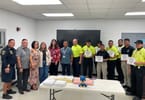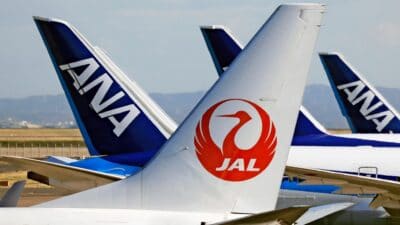At the last mid-term engagement for the يوگنڊا ٽور آپريٽرز جي ايسوسيئيشن (آٽو) on August 6, 2019, at the Hotel Africana in Kampala, Uganda, the Wildlife Authority’s Director of Tourism and Business Services, Mr. Stephen Masaba, made a major announcement outlining several changes in tariffs including a nominal increase in گوريلا اجازت ڏئي ٿو from USD 600 to USD 700 per permit. The increment comes incentivized with the opportunity for free park entrance to Semliki and Mt. Elgon National Parks for one day. Also increased is chimp tracking fees in Kibale Forest National Park from USD 150 to USD 200 per permit.
کان سفارش ڪيو ويو eTurboNews
Uganda Gorilla Tours
Other changes include a huge reduction in professional fees for filming of gorillas from USD 4,000 down to 30% of gorilla permit fees, a 50% reduction for nature walk fees, and reduction in entrance fees to USD 50 in Mt. Elgon National Park. Gorilla habituation experience remains unchanged at USD 1,500 per permit.
On prior consultation with local tour operators, many of whom failed to secure gorilla permits for their clients due to record demand this high season, Masaba, who was flanked by Uganda Wildlife Authority (UWA) Sales Manager Paul Ninsiima, announced that UWA shall now reserve 80% of permits for bookings through Ugandan registered tour operators and 20% for the rest of the public. The new reservation system shall also accept online payments as well as payment via mobile phones (mobile money) locally offered by local telecom operators. Masaba urged tour operators to comply with the ongoing inspection and licensing exercise being carried out by UTB as criteria to access the 80% permits.
He also announced that visitor numbers to national parks grew by 10% from 303,000 in 2016/17 to 344,000 in the 2017/18 financial year.
Gorilla permits sales increased from 40,714 to 43,124 with peak season sales between July and October at over 100%, averaging of 73% for the last financial year.94% were booked by foreign non-residents, 2% by foreign residents, and 4 % by Ugandans and East Africans.
Murchison Falls National Park recorded the largest number of visitors of 104,000 followed by Queen Elizabeth National Park with over 84,000. All parks except Semliki and Mt. Elgon, grew in visitor numbers.
Also invited at the engagement was Uganda Tourism Board CEO Lily Ajarova who used the occasion to introduce her new team including Deputy CEO Bradford Ochieng, Legal Officer Aida Wada Samora Semakula, and Quality Assurance Manager and Public Relations Manager Sandra Natukunda.
Ajarova outlined the achievements and plans of UTB since taking office in April of this year including development of a strategic plan; transfer of the Meetings Incentives Conferences and Events (MICE) Convention Bureau from the parent Ministry of Tourism Wildlife & Antiquities to UTB; inter- and intra-sectoral partnerships between UTB and the Ministry of Foreign Affairs with the aim of posting market destination representatives; constitution of a Crisis, Security and Safety Committee; a health technical working group to monitor and streamline reporting on zoonotic diseases; set up of a tourism investment fund for the private sector; provision of tax incentives and implementation of the tourism levy provided for in the Tourism Act 2008; and regular media stakeholder engagement. In addition, she announced that all strategic equator crossings in the country had been marked for development among others.
In 2017, when the Rwanda Development Board announced an increment in the price of gorilla permits from USD 800 to USD 1,500, the Uganda Wildlife Authority opted to maintain permits at USD 600 until now prompting a surge in demand for gorilla permits mainly from Rwanda-based tour operators who opted to book permits just across the border mainly in Mgahinga, Nkuringo, Rushaga, and Ruhija.
Unconvinced by demands from desperate tour operators who have lost out suggesting that perhaps UWA allow individual gorilla families to be tracked twice a day, reduction in tracking time or even increasing the number of trackers per group from 8, UWA is adamant not to reduce the value of the experience or to be entrapped by short-sighted temptations of increased revenue at the expense of the environment in tandem with its mandate and mission.
Speaking of the increase in the number of permits since gorilla tracking started in 1993, Masaba summed up: “From 2 gorilla groups … today, we have 19 groups and 152 permits per day in Bwindi Impenetrable Forest NP. So we have been responding to trends and needs.
“But there must be … limits of acceptable use. The demand is insatiable especially in the peak season. Let business not drive us crazy to destroy the resource we hold dear.” Changes take effect on July1, 2020.
The event was hosted and sponsored by AUTO who was represented by its Chairman, Everest Kayondo, Vice Chairman Ben Ntale, Secretary Farouk Busulwa, and member Brian Mugume. AUTO CEO Gloria Tumwesigye and her team – Jonathan Ayinebyona and Sarah Nakawesi – promised such similar engagements to provide an opportunity for members to network and get updates on important issues affecting their operations.























